SUMMARY
QUICK ASSESSMENT 0-10
VENOM: Toxic
PREVALENCE: Localized
ACTIVE PERIOD: Active at night
KEY ID FEATURES: Variable, dark rusty red, black, dark green with black markings, red eyes, triangular head, usually in ambush ready to strike
BEHAVIOR: Ambush predator usually stays still and ready to strike, will bite readily with fast strikes, sits low to medium hight in mangrove trees and roots
SIZE: Small/Medium - 30-40cm (males), 60-80cm (females)
IUCN: LC - Least Concerned
VENOM REVIEW*
COMPOSITION: Procoagulants (probably present), Anitcoagulants (possibly present), Haemorrhagins, Nephrotoxins (likely not present), Necrotoxins (likely not present).
LOCAL EFFECTS: Serious envenomation possible, potentially lethal, local pain, swelling, bruising, blistering, minimal local necrosis.
GENERAL EFFECTS: Pain, severe swelling, bruising, blistering, necrosis, possibly headache, vomiting, abdominal pain, collapse or convulsion.
TREATMENT: Antivenom.
*INFORMATION ON VENOM OBTAINED FROM WWW.TOXINOLOGY.COM
GALLERY
IMPORTANT: Many snakes have significant variance in coloration and pattern even within the same species. There can also be extreme differences in appearance from juveniles to adults so it is important to never assume you have properly identified a snake.
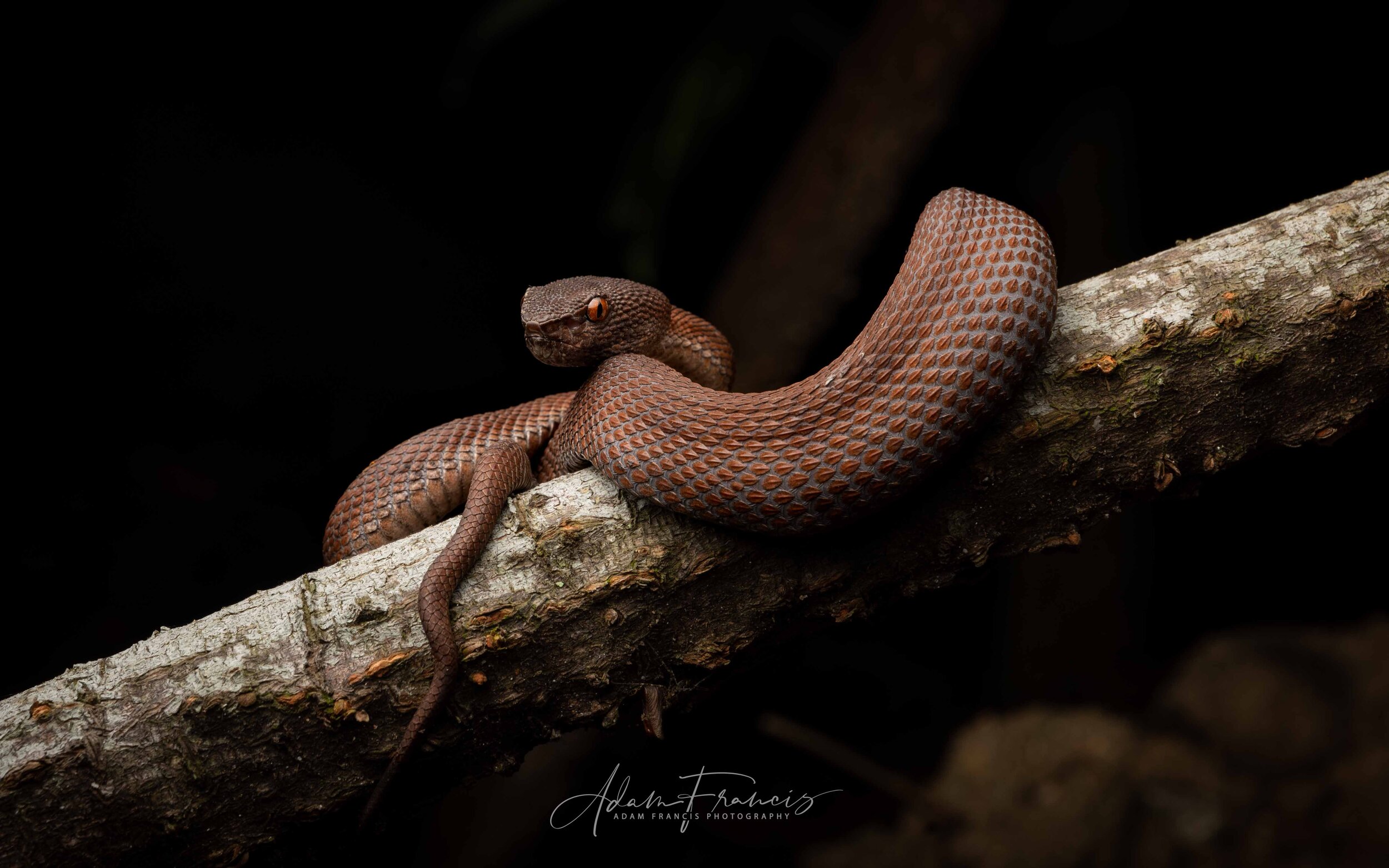
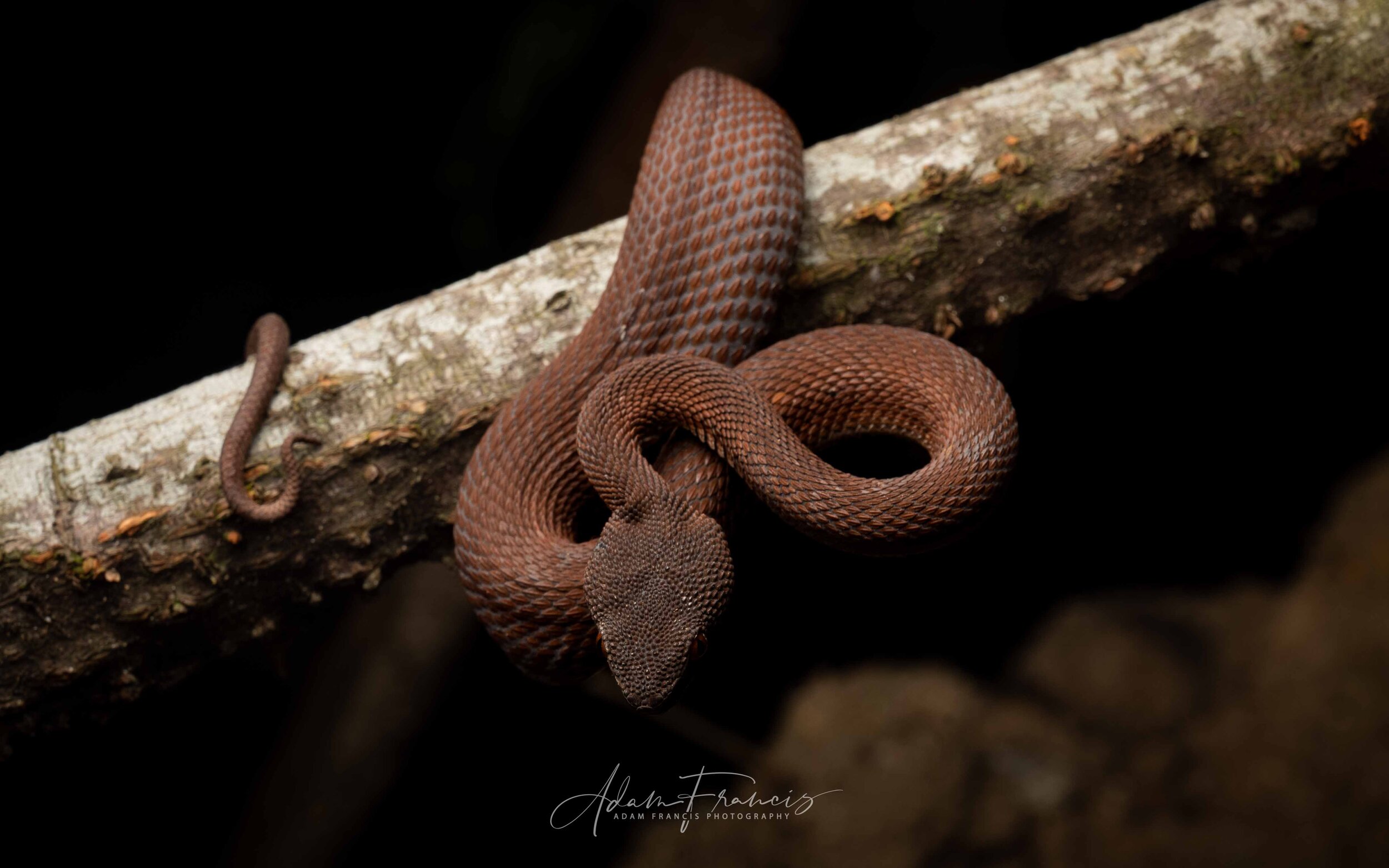

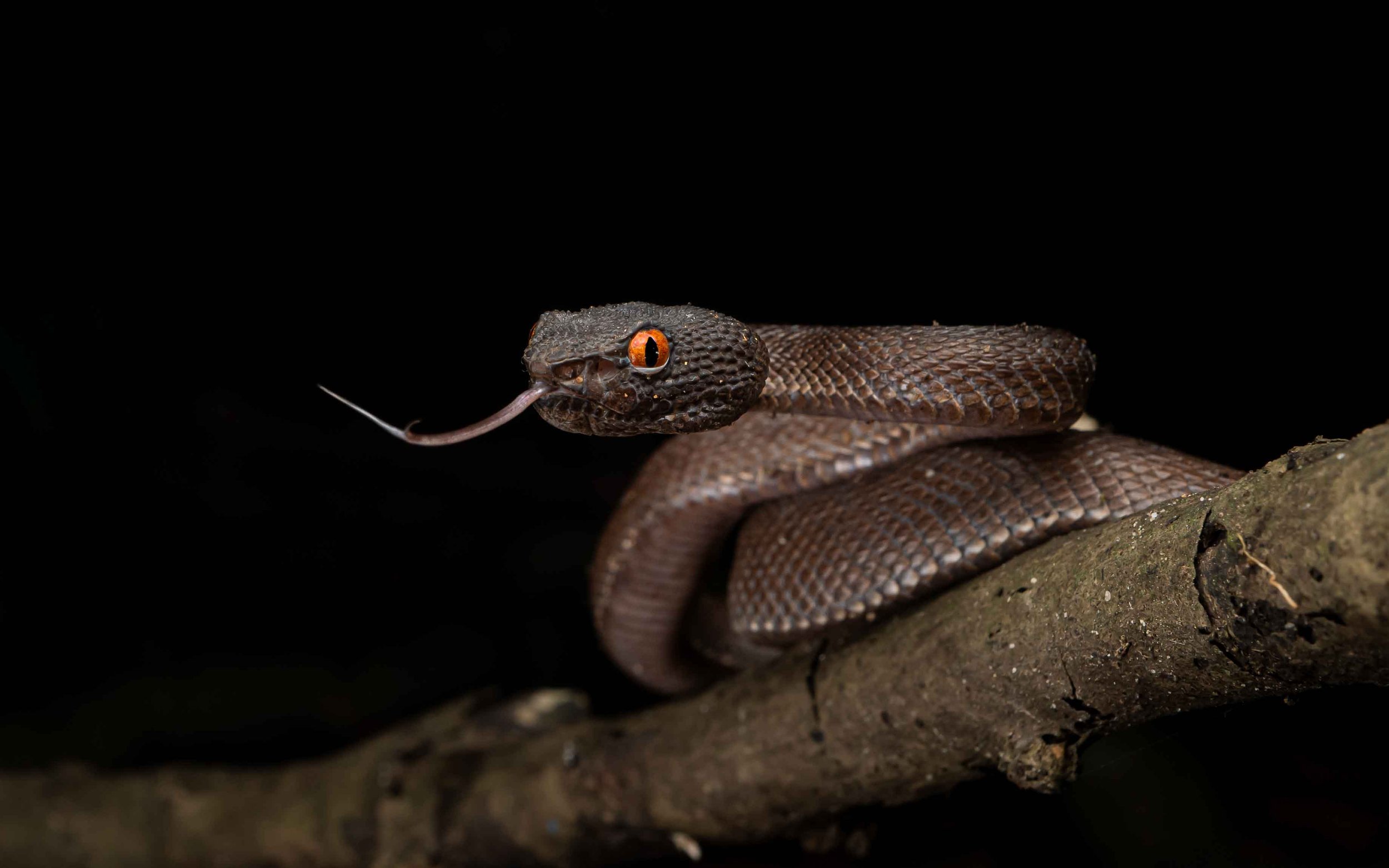
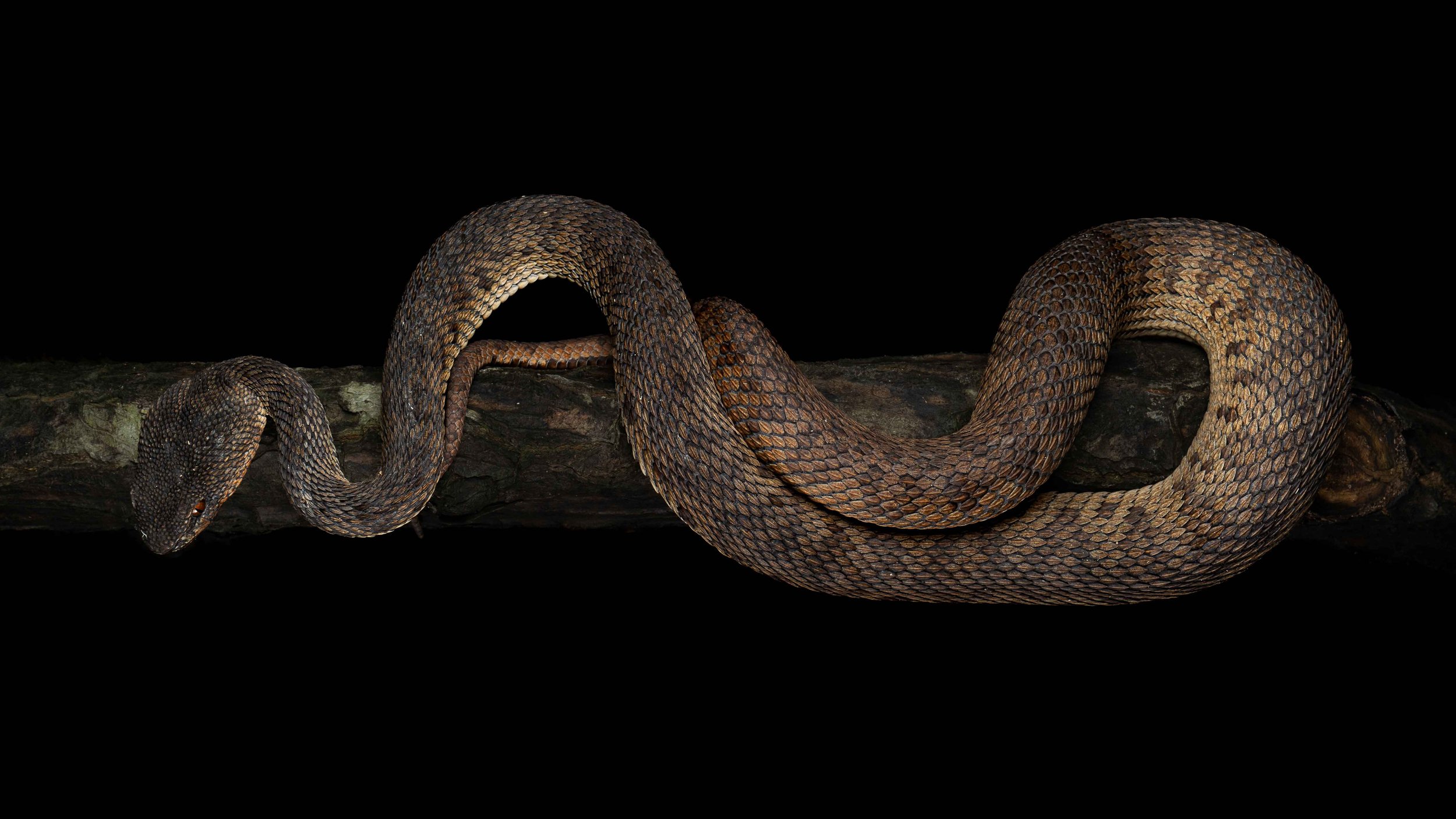
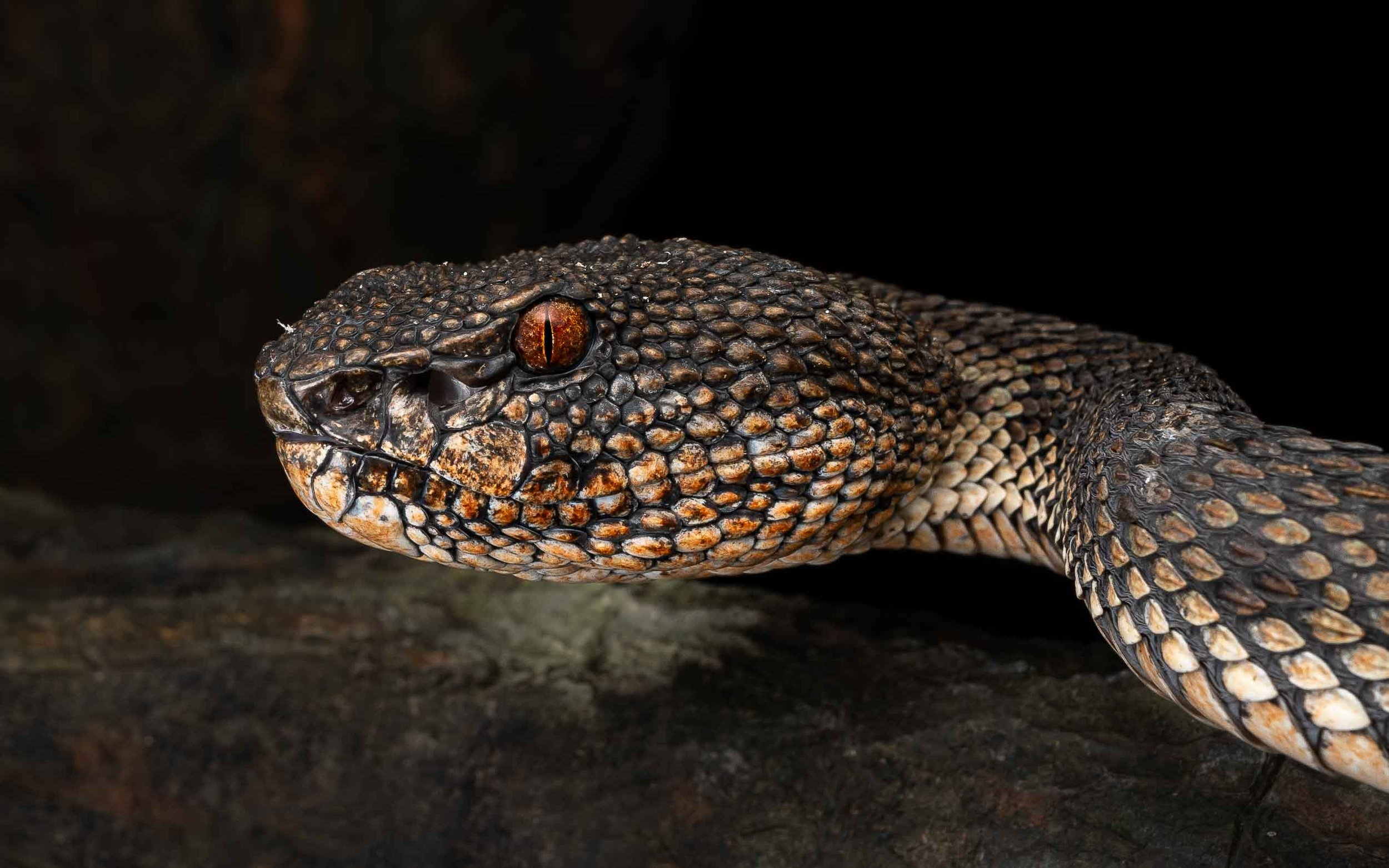
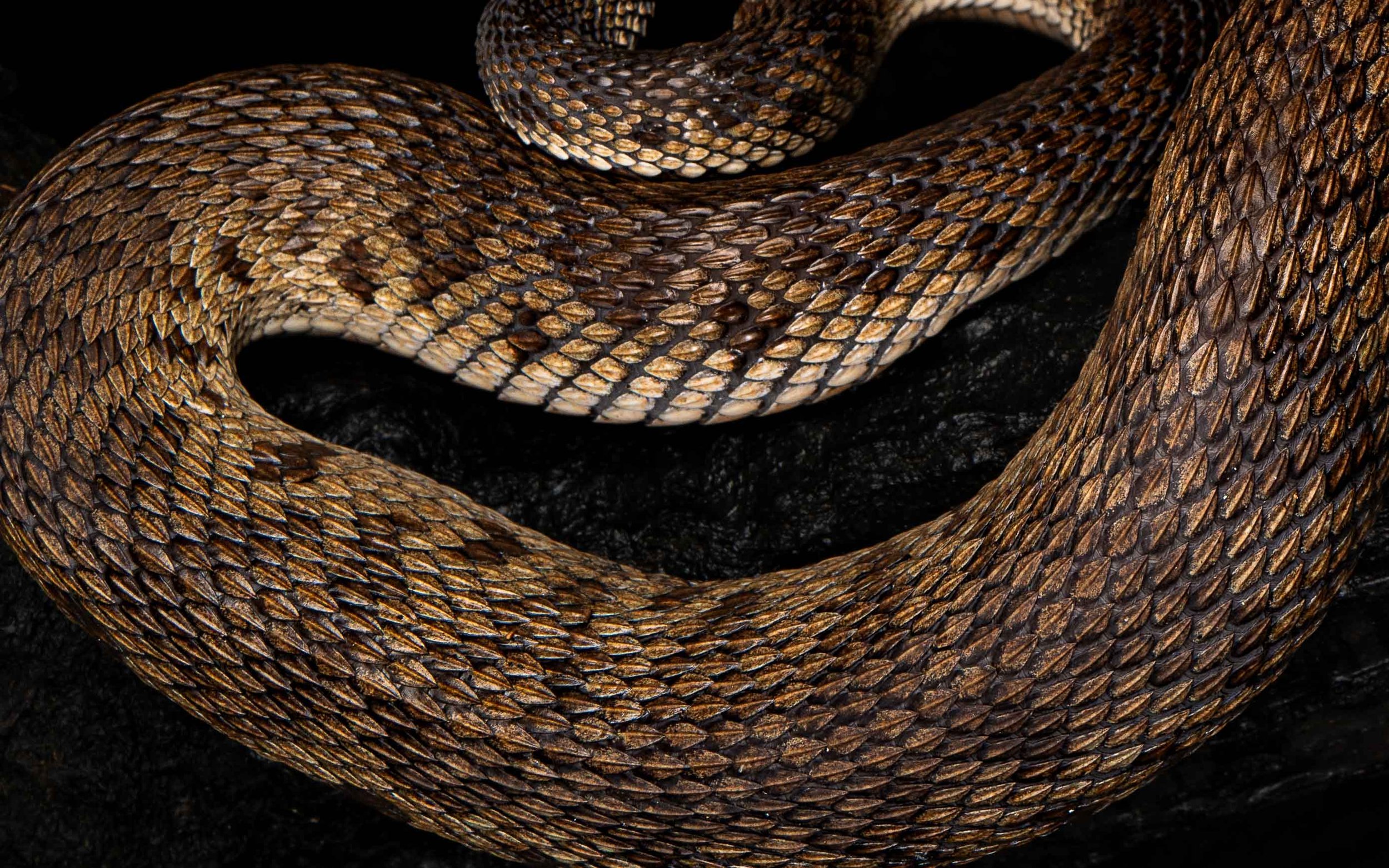
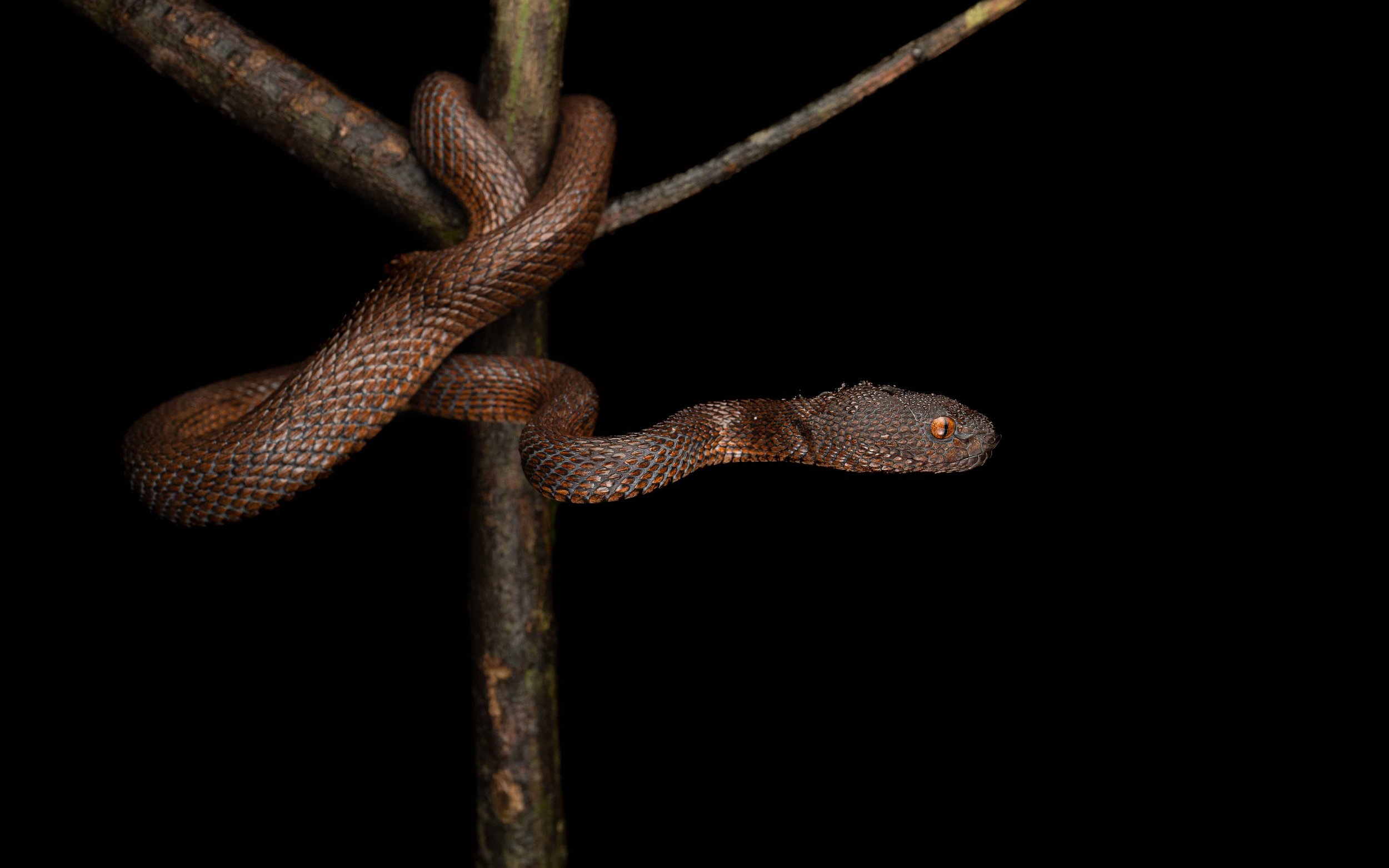
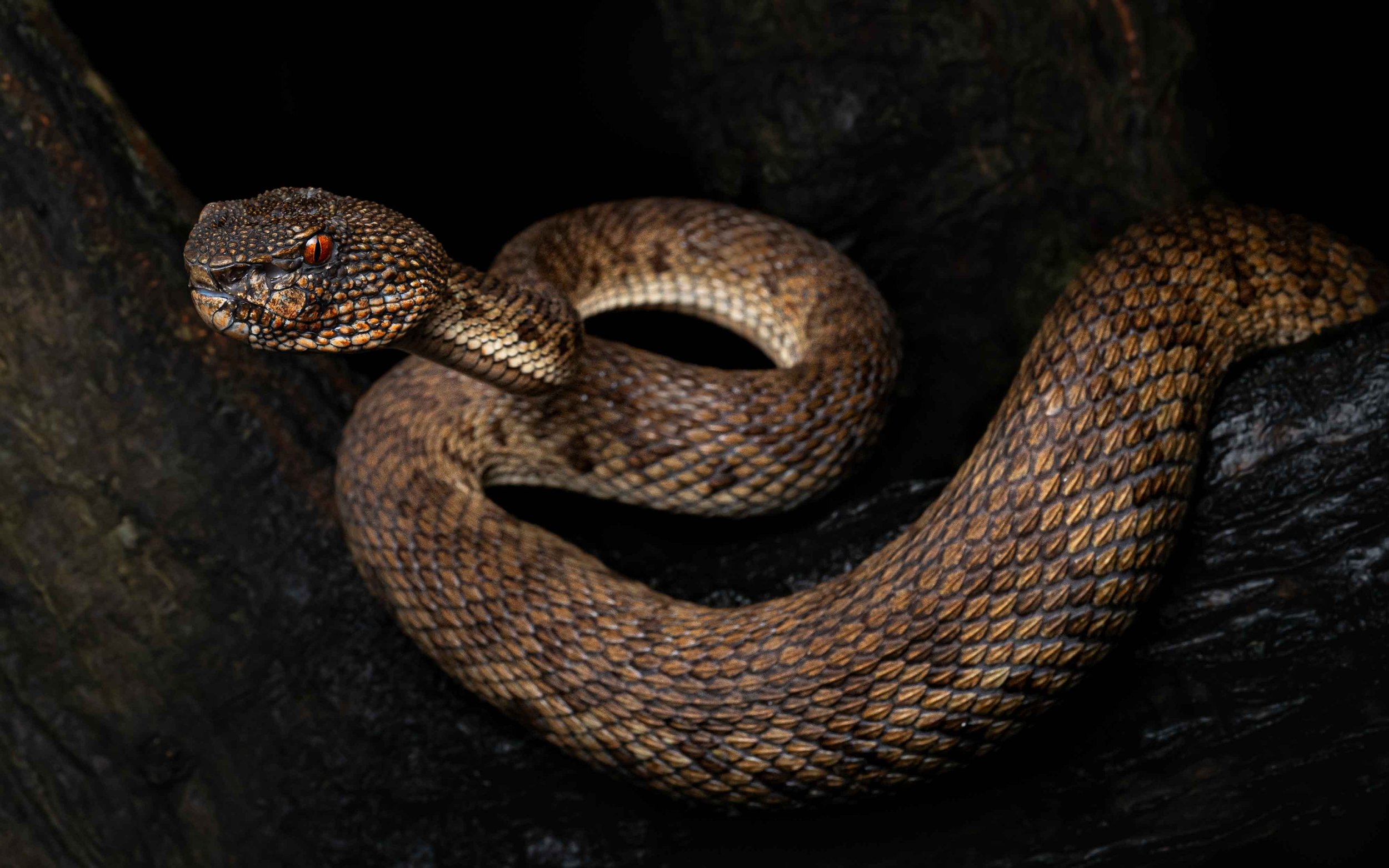
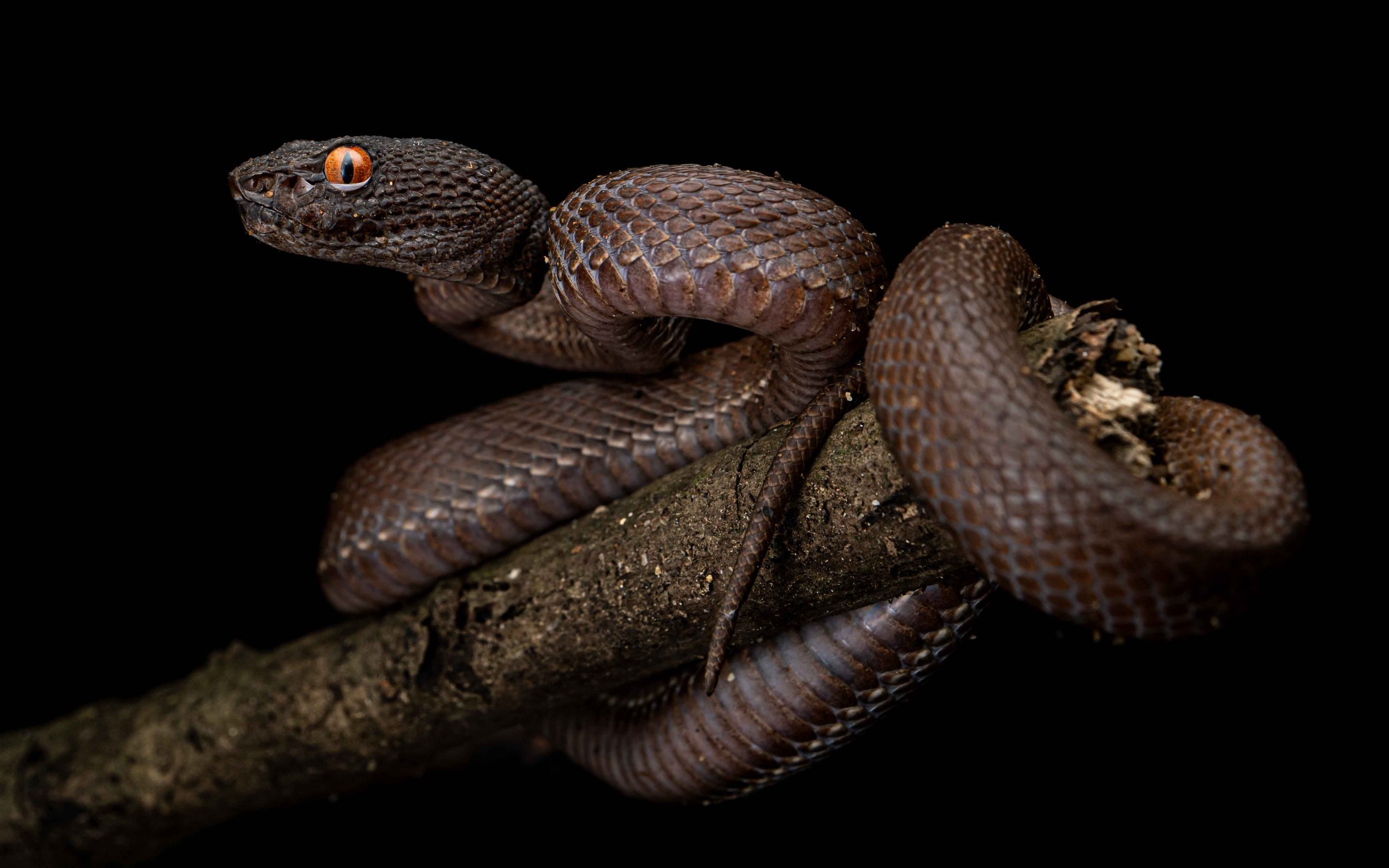
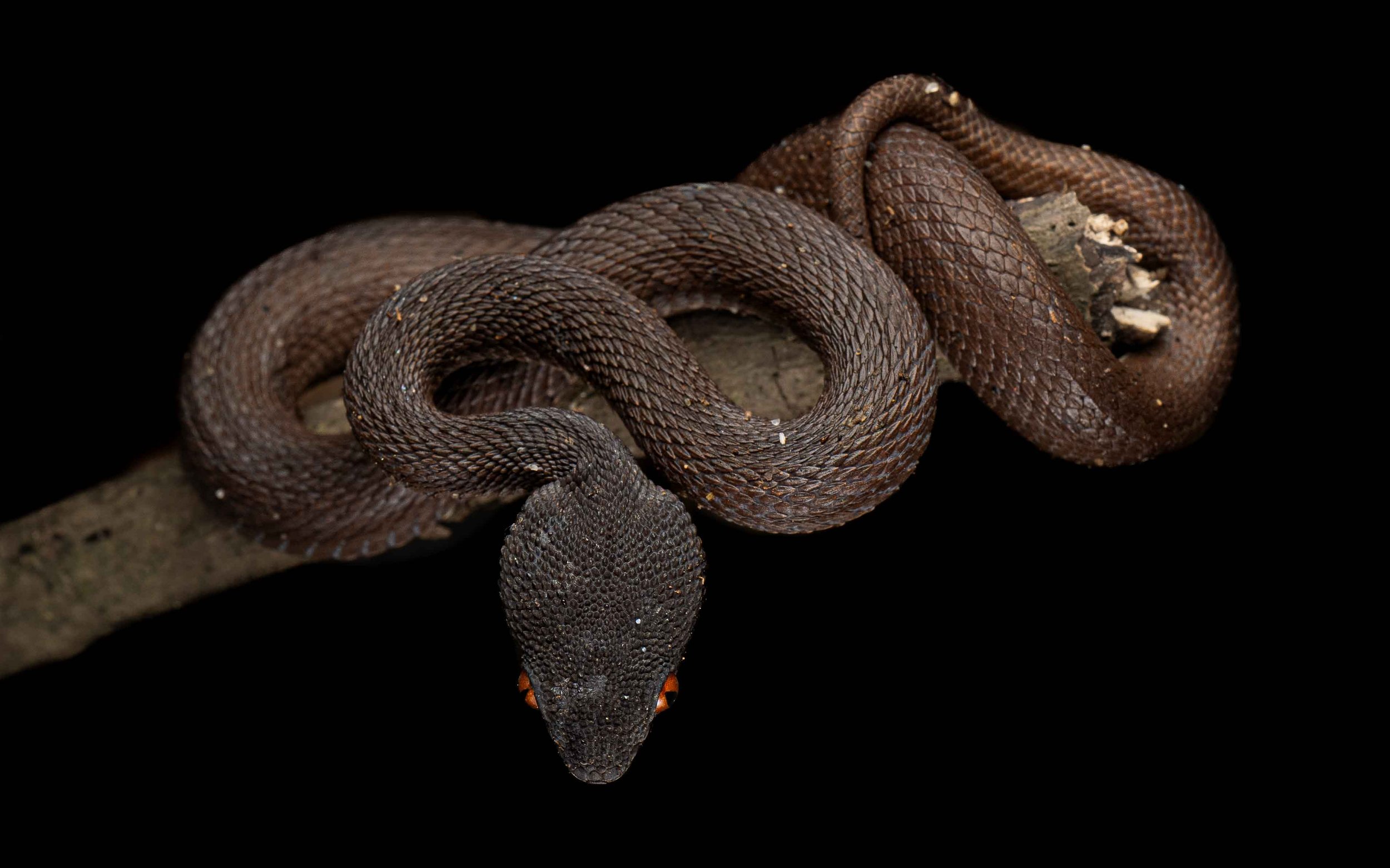
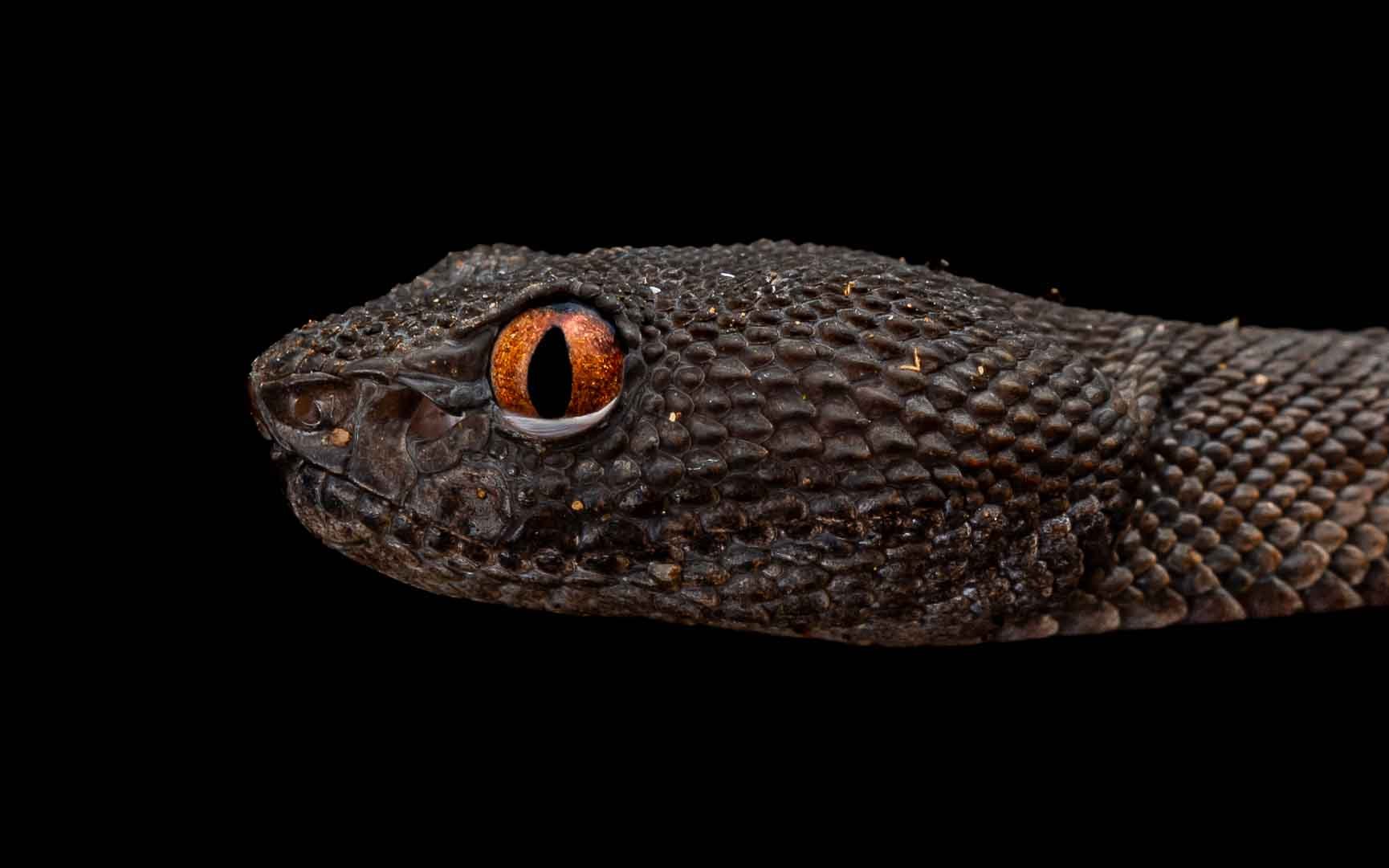
DESCRIPTION
Variable in color and markings ranging from reddish brown, black, dark green with black or dark purple rounded square markings. Generally red eyes with vertical pupils. Ventrals usually a much lighter shade of the body color. Sexual dimorphism present with males significantly smaller than females. Head scales granulated. Large triangular head typical of vipers. Tail same color as body.
BEHAVIOR
Mostly active at night and occasionally roosting in bushes or mangrove roots during the day. The Shore Pit Viper is an ambush predator that will wait in a single position ready to strike. As a viper they have relatively long retractable fangs and will bite readily at anything that comes within range. Generally not prone to give chase but will hold their ground if they feel cornered. Not actively aggressive but will not hesitate to bite. A bite from a Shore Pit Viper should be considered very serious and medical attention should be sought immediately. Although not known to be deadly serious damage can occur from a bite even if treated and complications can always arise. Deaths from untreated bites have been recorded.
HABITAT
Highly localised to coastal mangrove. Found in and around mangrove trees from the roots up into the canopy though generally lower down.
MISTAKEN IDENTITY
NO SNAKE SHOULD EVER BE HANDLED BY ANYONE BUT EXPERTS: Relatively distinct but the darker low pattern variants could be confused with harmless species for the inexperienced.

